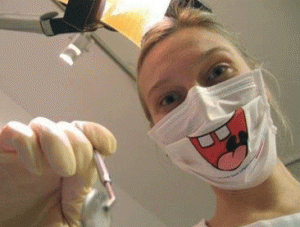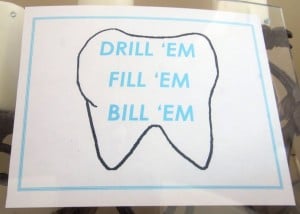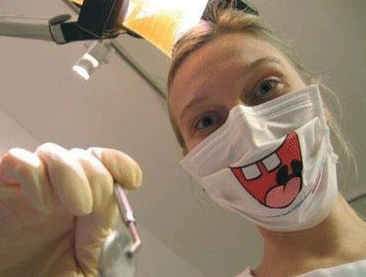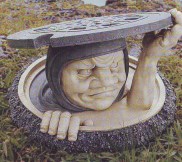 Just for the sake of discussion, I’m going to assume that either you, or someone you know, has had a cavity in a tooth. When recognized by your dentist, you get the news that he or she has to drill and fill: remove the bit of infection, and restore the tooth with a filling, a bit of composite, or metal amalgam (depending on your dentist, and his or her preference). And, when you’re done, you’ve sworn to floss, or brush more – or something – right?
Just for the sake of discussion, I’m going to assume that either you, or someone you know, has had a cavity in a tooth. When recognized by your dentist, you get the news that he or she has to drill and fill: remove the bit of infection, and restore the tooth with a filling, a bit of composite, or metal amalgam (depending on your dentist, and his or her preference). And, when you’re done, you’ve sworn to floss, or brush more – or something – right?
Up until recently, horses have been spared tooth filling. There are probably a lot of reasons for this, not the least of which is that, heretofore, nobody really worried about cavities in horses, because there was essentially never any indication that cavities caused horses problems. Clearly, the horse’s tooth is a different animal. That fact, however, is not an impediment to people who have a keen interest in finding something wrong in the horse’s mouth, nor does it discourage them from trying to “fix” those things, even before determining if they are really a problem.
Work, as they say, expands to fill the available space.
In horses, in some circles (hopefully not yours, and certainly not if your horse is in mine), people are beginning to advocate drilling and filling horse teeth. They’ve even given the process a very professional sounding name, along with the requisite abbreviation: infundibular caries restorations (INF/CA).
Hopefully, you’re not familiar with the procedure, but, heck, forewarned is forearmed. Here’s how it goes:
 1) Your tooth specialist (don’t get me going) identifies black, decayed looking holes the cheek teeth.
1) Your tooth specialist (don’t get me going) identifies black, decayed looking holes the cheek teeth.
2 He or she “debrides” them (grinds out the black stuff) using air abrasion with aluminum oxide or a surgical length round burr.
3) He or she follows up the drilling by attempting to etch/bond and “restore” the tooth (and the damage that was just done) with a dual cure composite resin.
And everyone is happy.
Well, maybe not everyone, probably not the horse, maybe not you, if you’ve had to shell out some money for this, but certainly the person who did it. So, to be more correct, someone is probably happy.
If you’re told your horse has a cavity, I hope you don’t go for this. I’ve got several serious problems with this procedure:
 1) Nobody knows if these black spots present, or will present, a problem for the horse. I mean, the reason that we “float” horse teeth is because of the way that they wear – who’s to say that they won’t just grind those little black spots out on their own?
1) Nobody knows if these black spots present, or will present, a problem for the horse. I mean, the reason that we “float” horse teeth is because of the way that they wear – who’s to say that they won’t just grind those little black spots out on their own?
2) There is absolutely no way that anyone can adequately remove all of the affected dental tissue in the three dimensional structure of the tooth. The horse’s cheek teeth are deep cylinder’s and access to the is limited; no one should just plug a “restoration” in a deep dark hole. So, even if the procedure were needed, if infected material were left in place, and you put a plug over it, that would just allow the process to continue on undercover: a dental sweeping of dirt under the rug, as it were.
3) Air abrasion, the procedure of choice for this little intervention, is uncontrollable in regards to the tooth structure being removed. Who knows, you might just get into the sensitive pulp inside the tooth. I mean, there’s no way to know when you’ve gone too deep.
4) It’s not any better if a burr is used. Burring a tooth blind is just stupid. There’s no way to see where your going. Imagine your dentist putting on a blindfold before he drilled into your tooth. Would you just sit there for that?
 Then there’s the question of what you use to fill the newly drilled hole. There are only a couple of options, really. Composite resins, which are what your dentist most likely uses, absolutely must be placed onto a properly prepared tooth surface that has been etched and bonded in a completely dry environment. Unfortunately, this sort of environment is something that you’ll never find or create in a horse’s mouth (can you imagine how high a horse might jump if you shot off one of those little air jet thingies that dentists have in his mouth?) There are glass ionomer pastes that can cure in the presence of moisture, but, unfortunately, they don’t stick all that well. Some folks are mixing material, but none of the available materials would seem to be ideal for horses.
Then there’s the question of what you use to fill the newly drilled hole. There are only a couple of options, really. Composite resins, which are what your dentist most likely uses, absolutely must be placed onto a properly prepared tooth surface that has been etched and bonded in a completely dry environment. Unfortunately, this sort of environment is something that you’ll never find or create in a horse’s mouth (can you imagine how high a horse might jump if you shot off one of those little air jet thingies that dentists have in his mouth?) There are glass ionomer pastes that can cure in the presence of moisture, but, unfortunately, they don’t stick all that well. Some folks are mixing material, but none of the available materials would seem to be ideal for horses.
One of the nice things about working on horses is that, unlike the situation with, say, an auto mechanic, they haven’t changed the model in thousands of years. I’m pretty sure horse cheek teeth have been thriving for millenia without having composites shoved in them, a dental manhole cover that just might not allow feed-related garbage and bacterial breakdown products to get out of the tooth. The rationale for doing filling in horses mostly revolve around “preventing” fracture of the tooth and “halting” further decay, but, honestly, those rationales don’t hold much water, because there’s really no evidence that the procedure does any of that. Furthermore, even if there were to be a problem, if you can’t be sure that all of the infected material is out (which you can’t), the tooth will just continue to decay under the restoration, (but you won’t know that for years).
The bottom line is that tooth decay just doesn’t seem to be problem in most horses. Furthermore, messing with the structure of the tooth, without really having any idea of the consequences is a bad idea.
 I’m somewhat open to the idea that tooth decay in the horse might be a long-unrecognized problem, although, honestly, given how long people have been working with horses, you’d think that someone might have noticed before now. However, I’m completely opposed to the idea that people should go drilling and filling inside horse mouths, when they really have absolutely no idea if they’re actually dealing with a problem. If someone suggests to you that your horse has a cavity that needs filling, to be polite, ask them if they are conducting a research project, and who is funding it. Then, if you want, sign your horse up. But for goodness sakes, don’t pony up your hard earned cash to get a filling in your horse’s tooth. Given the current technology, and state of knowledge, it’s almost certainly not worth it.
I’m somewhat open to the idea that tooth decay in the horse might be a long-unrecognized problem, although, honestly, given how long people have been working with horses, you’d think that someone might have noticed before now. However, I’m completely opposed to the idea that people should go drilling and filling inside horse mouths, when they really have absolutely no idea if they’re actually dealing with a problem. If someone suggests to you that your horse has a cavity that needs filling, to be polite, ask them if they are conducting a research project, and who is funding it. Then, if you want, sign your horse up. But for goodness sakes, don’t pony up your hard earned cash to get a filling in your horse’s tooth. Given the current technology, and state of knowledge, it’s almost certainly not worth it.








